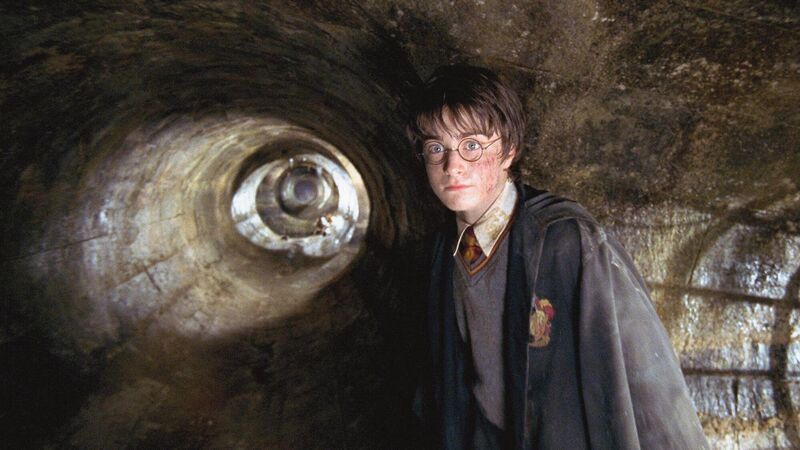Colman Noctor: Classic stories show children how to survive in the face of adversity

Harry Potter and the Chamber of Secrets: classic stories have much to teach
The Harry Potter movie franchise turned 20 last week. I am not ashamed to say that despite being 44 years old, I have always been, and will always remain, a huge fan of the books and movies.
Like many others, I was enthralled by JK Rowling's characters and storylines. I can remember queuing outside Eason’s in Liffey Valley at midnight in July 2007 to get my copy of and, despite being surrounded by teenagers in wizard outfits, I stuck it out to be one of the first to read it.
My obsession even inspired my graduate diploma thesis, titled ‘A Psychoanalytical Interpretation of Harry Potter’. In conducting this study, I dissected the themes of the storylines to find out why they were so popular. I also had a theory that elements of the stories interacted with deeper aspects of our psyche.
As I explored the books' themes, I came across the ‘fairy-tale formula’, which makes a story instantly relatable to younger readers. The classic stories such as Cinderella, Snow White, Hansel and Gretal and Rapunzel, all featured children with one thing in common: they had no parents. Given that the core anxiety of children is the loss of their primary carers or parents, it’s easy to understand why the formula is so powerful. This fear is at the centre of separation anxiety, attachment disorders and obsessional fear of loss.
In the above fairy tales, the main character overcomes adversity without the company or support of their parents. This is unconsciously reassuring to the child reader or viewer, showing them that despite the worst-case scenario, survival is possible.
The Harry Potter character endures a similar fate. At the beginning, we are informed of the death of his parents, and the themes that follow highlight how, during the most harrowing adversity, even the meekest characters can survive with the right support.
Topics such as racism are dealt with through the tensions between ‘Mudbloods’ and ‘Truebloods’. The storylines also cleverly reframe previously frightening archetypes, such as witches, ghosts, owls and rats as pets and friends.
Rowling also cleverly uses the art of reframing in the magical creature called a ‘Boggart’, which takes the form of the image that scares you the most. The key to overcoming the Boggart is to imagine the scary object as something non-threatening and humorous before casting the spell ‘Riddikulus’, thereby disarming the fear and replacing it with humour. It’s a highly effective psychological strategy for overcoming perceptions of fear.
Rowling also delivers an important message about psychological wellbeing. Even in the wizarding world, much of the magical power depends on the inner qualities of the person. None is more explicit than the Patronus charm. This charm is used to fend off ‘Dementors’, dark mythical creatures who 'suck the happiness out of someone’. They guard the wizarding prison and are seen as the enforcers of the most heinous form of punishment.
To battle a Dementor, the wizard is required to conjure up their most positive memory and the energy generated by this feeling is used to charge the spell. Once this feeling is conjured up, the wizard must exclaim ‘Expecto Patronem’ and if it is powerful enough it will deflect the Dementor and protect the individual under attack. This is an excellent metaphor for the power of engaging in positivity, or gratitude as a means of fending off negativity or melancholy.
Though the Harry Potter series was written before social media came to dominate many young people’s lives, Rowling seems to presage what lies ahead. In book one, Harry is introduced to the ‘Mirror of Erised’ (desire spelt backwards). When he looks into it he sees an image of what he would like to be, instead of what he is.
To me, the Mirror of Erised is not unlike social media, as it is a space where we can construct an image of who we would like to be instead of who we are. Dumbledore, the headmaster of the wizard school Hogwarts, realises that Harry is becoming obsessed with the mirror and the following skilfully-written exchange occurs:
‘Can you think what the Mirror of Erised shows us all?’
Harry shook his head.
‘Let me explain. The happiest man on earth would be able to use the Mirror of Erised and he would look into it and see himself exactly as he is.’
Harry thought. Then he said slowly, ‘It shows us what we want... whatever we want...’
‘Yes and no,’ said Dumbledore quietly. ‘It shows us nothing more or less than the deepest, most desperate desire of our hearts. However, this mirror will give us neither knowledge nor truth. Men have wasted away before it, entranced by what they have seen, or been driven mad, not knowing if what it shows is real or even possible. Remember Harry, it does not do to dwell on dreams and forget to live.’ (Rowling, 1997)
If we replace the Mirror of Erised with contemporary social media platforms, this passage still makes perfect sense. This magical mirror seduces the user into a fantasy state of wondering what their life ‘could’ or indeed ‘should’ be. Social media platforms are not unlike this Mirror of Desire, only that the contents of our conjured images are broadcast publicly so that we can each see each other’s desires.
This presents the challenge that Dumbledore warns Harry about: we become mesmerised, comparing our ‘hoped for self’ to others and forgetting to be ourselves. In our current comparative culture, we are often guilty of trying to emulate or compete with the other instead of concentrating on the self.
There is a pervasive struggle for Harry throughout the whole series where he cannot ignore the fact that he and his arch-nemesis Voldemort are very alike. As it transpires, a part of Voldemort is also a part of Harry. But despite this similarity, something major separates them, - free will.
Harry is tempted to cross over to the dark side at regular intervals, from meeting Draco Malfoy in the first book right to the scenes in the Forbidden Forest where the final duel between Harry and Voldemort occurs. Dumbledore brilliantly interprets this in the when Harry says he is worried that he and Tom Riddle (Young Voldemort) are very alike.
"[The Sorting Hat] only put me in Gryffindor," said Harry in a defeated voice, because I asked not to go in Slytherin."
"Exactly," said Dumbledore, beaming once more. "Which makes you very different from Tom Riddle. It is our choices, Harry, that show what we truly are, far more than our abilities."
It is for these reasons that 20 years on the Harry Potter series remains relevant. The popularity of these books is not just down to great storytelling, they are also successful because they connect with our vulnerabilities. And they remind us that no matter what adversity strikes, with the support of people who love us, a belief in our ability and the capacity to choose not what is ‘easy, but what is right, is what defines us. And so, we must choose wisely.
The power of stories cannot be underestimated in our children’s lives and we need to continue to encourage them to engage with meaningful characters and stories. Stories help children to make sense of their world, develop language around feelings and hopefully develop an appreciation of meaningful value systems, something not replicated in the YouTube videos of people screaming irritatingly while playing a video game or making slime.










